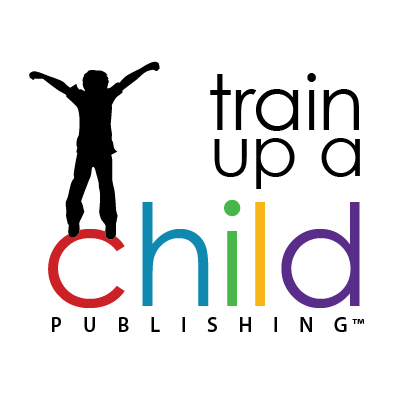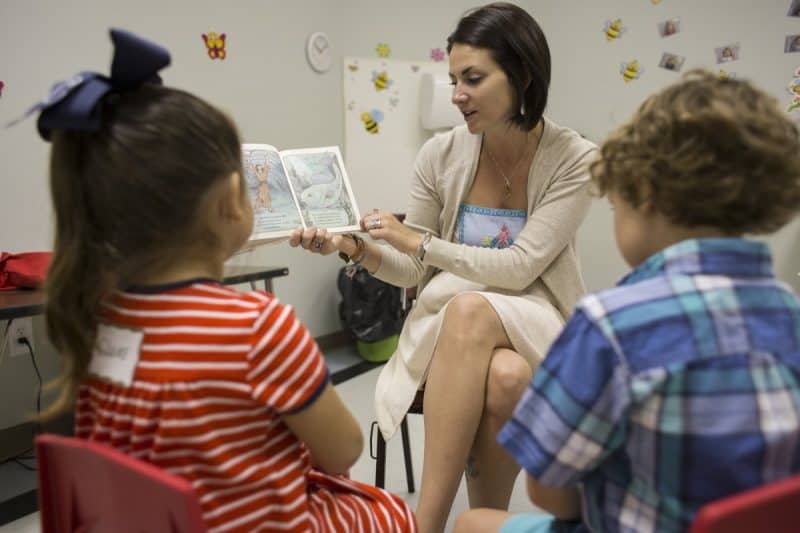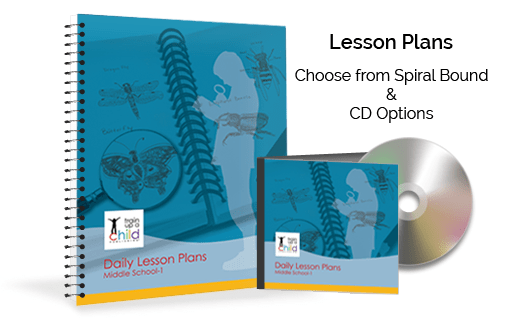How to use Train up a Child Publishing Christian, Literature-based Curricula in the Classroom
Transitioning from teaching with textbooks to utilizing a literature-based curriculum in the classroom can result in many questions from teachers.
As result, we’ve compiled the following questions and solutions for those teachers and administrators considering Train up a Child Publishing as their curriculum choice.
Is it really possible to cover the Creation to Modern time periods in a single year?
Definitely!
By planning ahead and not overstepping the recommended timeframes outlined in the Teacher’s Manual, you can teach all of it in a year. The critical point to remember is that we don’t think of students as learning for any single year. We see education as a layering effect, with each year building on the last.
Even with a textbook, you cannot thoroughly cover everything in a single year. But rather than re-teaching, which is often done in textbooks during the first few months, we believe in relevant learning that children can hold onto and then build on as the years go by. For example, in 1st grade, the focus might be on significant people throughout the units, and 2nd graders might study events that included the people they learned about in 1st grade.
Think of education as layers like in sedimentary rock, with each building on the other, creating a firmer foundation overall.
I only have so much time for literature, science, history, etc. How do I fit it all in?
One of the positives about using our curricula is subject integration. While reading a book, you can teach about science, fine arts, or history through the content. Vocabulary and spelling can come directly from the literature. Our curricula focus on teaching children to think and learn, increasing their desire to do so in the process.
While subjects have been used for many years in the classroom for structure, we view them as overlapping and integrating into the learning process.
For example, we don’t see writing as a subject but rather a life skill that should be incorporated into almost every subject area of study. It takes a little different thinking process for teachers, but in the long run, it is the most natural way to teach and to learn.
Also, less time is spent on busy work such as worksheets and creating written tests. More time is actually spent on discussion, thinking, and writing. You’ll find that you only run out of time with our curricula because your students don’t want to quit working!
How do I evaluate students without a battery of written tests or workbooks?
Curriculum companies have long reverted to what is easiest to publish rather than what is best. Ironically, although they are easier to grade, written tests and workbooks only grade one type of student learning. Students learning in many different ways should also be evaluated in different ways. Some recommendations that we make include:
- oral and written narrations
- book reports
- essay style tests
- lapbooks and graphic organizers
- journaling
- re-enacting/dramatization
- group projects
- paired projects
- artistic and creative expression
Teachers often find that such forms of evaluation give them greater latitude and allow them to evaluate the whole student. It is also encouraging to both parents and teachers to see that children’s gifts are not restricted to how well they do with pencil and paper.
We recommend using rubrics, which make it much easier for teachers to give numerical grades. Rubrics also provide an initial outline for expectations for both the student and the teacher, resulting in more transparent communication. Finally, rubrics can be very simply designed and easily documented for teacher and student records.
How do students using these curricula do on standardized tests?
We understand that standardized testing plays a strong role in education as it is used by other schools, colleges, and even the federal government to determine if children are learning appropriately.
From our experiences, we have found that Train up a Child Publishing students fare as well or better on standardized tests than students who use textbooks.
There are cases where some students have actually jumped 1-3 grade levels once they switched from a science textbook to a “whole book” approach. We attribute this not only to a higher quality of teaching material but also to the fact that the student retained more information because it was presented in a relevant and exciting way.
Will my students learn enough if we are spending time reading whole books?
Again, compared to a textbook education that skims the surface of many topics, reading whole books immerses students in material that makes it more memorable and relevant. While fewer topics may be covered, retention is usually higher.
Also, there are methods for filling in gaps that the whole book doesn’t cover. We strongly recommend students do mini-research projects and present information to their classmates.
A handout or notes on the board accompanying such material may often be used.
The best way to evaluate whether a person really understands a subject is to have him teach it. So, these presentations are two-fold: you can evaluate the student’s work, and the student is sharing what he has learned with his classmates.
Accountability for what other students have presented can be used for evaluation purposes as well by having students journal or answer essay questions based on what other students have presented. Doing a couple of these per day can easily cover any missed information throughout an entire unit.
I looked at your Unit Program Tools, but I don’t have time to develop writing assignments and projects for the books. Do you have any suggestions on where I can find ideas?
The Unit Program Tools curriculum includes suggestions and directions for projects and writing assignments. There are timeline, map/globe, and geography assignment ideas and group and individual projects for history, science, and fine arts. Oral and written narration suggestions are included. Many of the units have project books that the student and/or teacher can use for ideas.
As another option to our Unit Program Tools curricula, we also have developed Daily Lesson Plans, currently available for first, second, third, and fourth grades and one middle school level. These detailed plans include:
- Weekly themes and objectives for history, science, language arts (including spelling, grammar, composition, poetry, and more), fine arts, and projects
- Class and independent reading lists and assignments as well as references needed, listed by week
- Globe, map skills and geography assignments integrated into history reading
- Science experiments illustrating concrete science concepts and the scientific method
- Vocabulary and grammar exercises (with teacher keys) derived from history and science reading
- Charts added as graphic organizers to aid students in learning to take notes
- Weekly spelling lists (in elementary grades) and memory work
- A variety of web sites listed for additional information or enrichment purposes, especially at the middle school level
You talk about integrating subjects and pulling language arts skills out of the books. How do I know if I am covering all of the skills for a year?
Using our Daily Lesson Plans, you can be assured you are covering enough language arts for the years.
With our Unit Program Tools, checklists and other tools are included with the curriculum to assist you in keeping track of student achievement.
The Teacher’s Manual has suggestions and instructions on how to use literature to teach language arts concepts. We mapped out the skills needed by grade level and covered them for history and science using the recommended books.
The skills may not be presented in the order of a textbook, but they are covered. For example, rather than cover habitats in one unit, we covered various habitats in the most relevant units, such as deserts during the Ancients Unit and prairies during the Westward Expansion Unit.
With this method of study, science is more easily integrated with history and geography, and the content makes more sense to the student by providing reference points.
Should we use your curricula for all of the recommended subjects? Could we try it out by just using it for history at first?
Of course, you can decide to use our curricula how it works best for your school or classroom. We make recommendations based on experience for you to achieve the most tremendous success and value out of the curriculum.
How will parents respond to the use of a literature-based curriculum?
Obviously, we can’t speak for every parent. Still, most responses have been very favorable, primarily because children come home excited about what they are learning.
When a child initiates a discussion about studying history, science, etc., in the classroom, any parent (and teacher) will be pleased. Also, their enthusiasm will grow as you involve parents in reading to students, helping with projects and graphic organizers, and even planning educational events.
Most of us who have been in the classroom as students remember being bored and tired of doing the same type of work every day. To see your child enthusiastic about school is genuinely marvelous.
Do we have to have copies of every reading book for every child?
No. In younger grades, single copies of many of the books will work because they can be rotated or read aloud in groups.
In older grades, you’ll want class sets of 5-9 chapter books for the year (one for every unit or so), but other books can be in single or multiple copies depending on how they’re utilized.
One of the positives of doing unit studies for history and science is that students don’t have to read the same material simultaneously. You can have students working in groups, pairs, or individually with some books read by all students by a specific time and other books being presented for content without every student reading the material.
The point is that the children learn the material, which can be accomplished in many ways.
Can my school afford to buy the books necessary to use your curriculum?
The private school educators that we have worked with previously have used several methods to create classroom libraries, including purchasing used books, buying books in bulk from discount distributors, having parents donate books, and holding fundraisers to help pay for libraries.
Some private schools have a large enough budget to get started with our curricula and add a little to the libraries each year. Some teachers even supplement their classroom resources by checking out books at their local libraries to have multiple copies. Finally, parents can be asked to purchase a limited number of chapter paperbacks for their older students as part of school supplies for the year.
I want to use your high school courses in my private school. Does every high school student have to have a copy of each high school course?
It depends. Most schools purchase an annual site license to use our curricula, but if your school is smaller, it may be more economical to use group pricing. Please get in touch with us for our School and Group pricing policies by filling out the Contact Form at the top of this page.
At Train up a Child Publishing, we have a genuine love for teaching and discipling children, so we want to be an encouragement and support for teachers working with children.
We believe that children learn in various ways and that by teaching to those learning styles, there is a more significant opportunity for success and that the children will love to learn.
We have an eternal view, longing for children to be who God created them to be, which is most likely when they have been allowed to learn and grow using their natural strengths and abilities.
Read more about our curricula by checking out the images below.
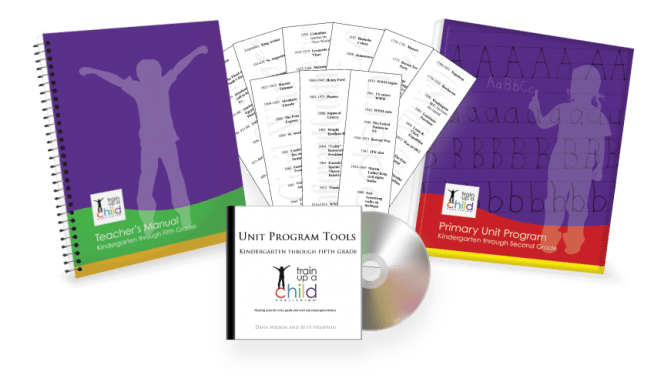
Unit Program Tools
Primary (K -2nd)
Intermediate (3rd-5th)
Preparatory (6th-8th)
Secondary (9th-12th)
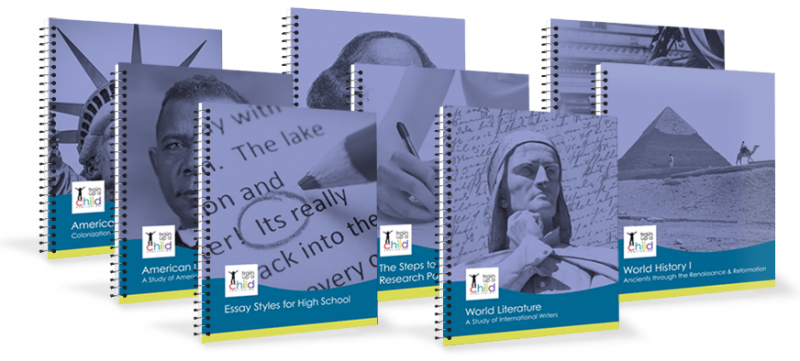
High School Courses
General Literature
American Literature
British Literature
World Literature
American History I
World History I
The Art of Public Speaking
The Steps to Writing a Research Paper
Essay Styles for High School
